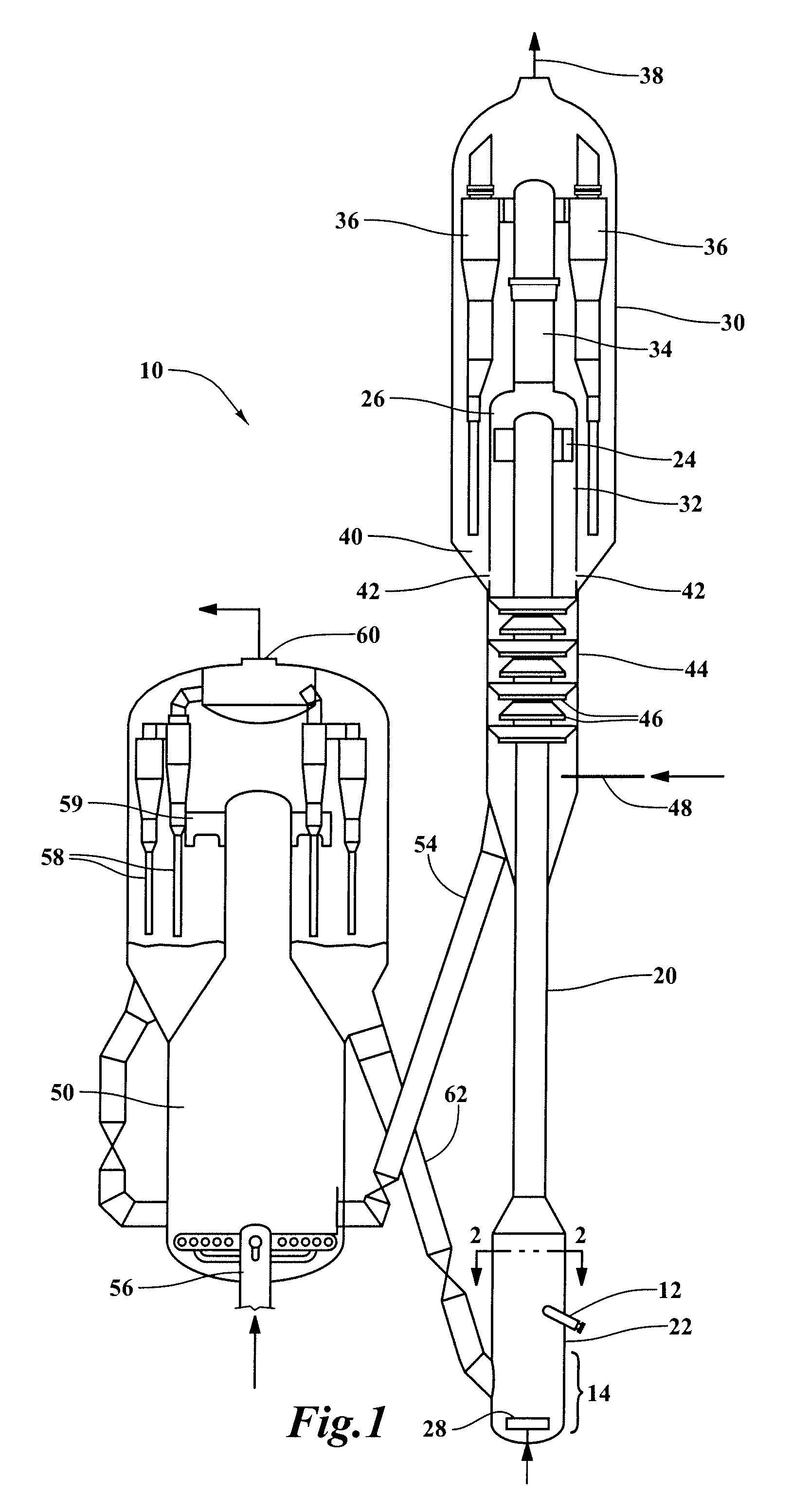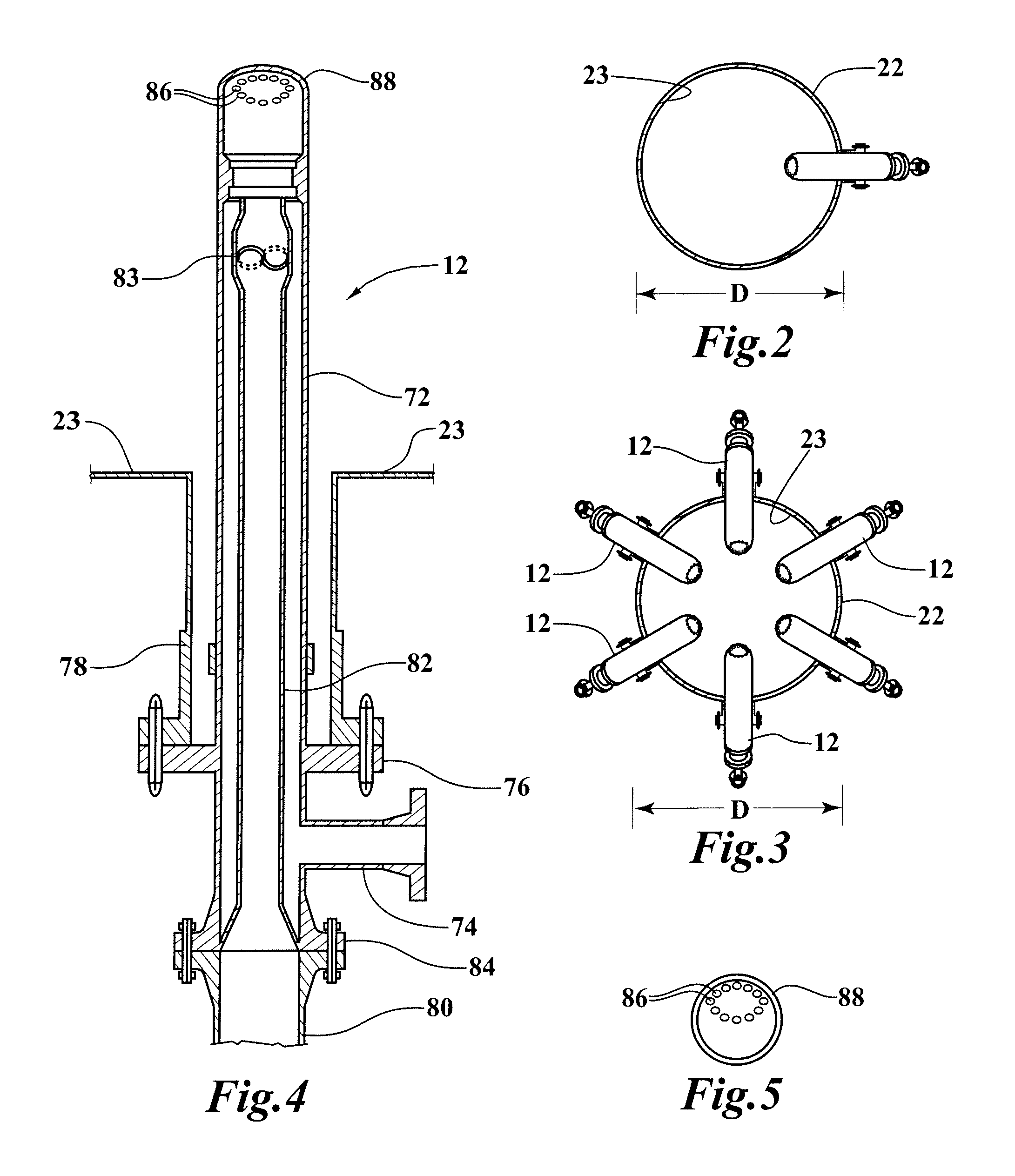Device for contacting high contaminated feedstocks with catalyst in an FCC unit
a technology of catalyst and feedstock, which is applied in the field of hydrocarbon cracking hydrocarbon cracking process, can solve the problems of rising coking and achieve the effect of increasing catalyst mixing with the feed and reducing the coking of the riser
- Summary
- Abstract
- Description
- Claims
- Application Information
AI Technical Summary
Benefits of technology
Problems solved by technology
Method used
Image
Examples
example
[0037]An FCC process and apparatus has a charge rate of 20,000 BPSD. The riser 20 is 0.9 meter (3 feet) in diameter with an enlarged lower section 22 1.8 meters (6 feet) in diameter. The feed is a Rubiales crude having the following properties. It has a Conradson carbon wt-% of 13.7, API gravity of 12.3, and an average molecular weight of 480.6. Furthermore, the feed has 33 ppm nickel, 125 ppm vanadium, and 1.3 wt-% sulfur.
[0038]Feed is introduced through distributors positioned above the entry of the catalyst and into the enlarged lower section 22 of the riser 20. Feed is injected through six distributors 12 spaced generally uniformly around a cross section of the enlarged lower section 22, as shown in FIG. 3, at a velocity of 30 meters per second (100 feet per second) and a pressure of 172 kPa (gauge) (25 psig). Steam is also injected through the distributors 12 with the feed at 10 wt-%. Each distributor 12 is positioned with all openings 86 in its tip 88 extending into the inside...
PUM
 Login to View More
Login to View More Abstract
Description
Claims
Application Information
 Login to View More
Login to View More - R&D
- Intellectual Property
- Life Sciences
- Materials
- Tech Scout
- Unparalleled Data Quality
- Higher Quality Content
- 60% Fewer Hallucinations
Browse by: Latest US Patents, China's latest patents, Technical Efficacy Thesaurus, Application Domain, Technology Topic, Popular Technical Reports.
© 2025 PatSnap. All rights reserved.Legal|Privacy policy|Modern Slavery Act Transparency Statement|Sitemap|About US| Contact US: help@patsnap.com



